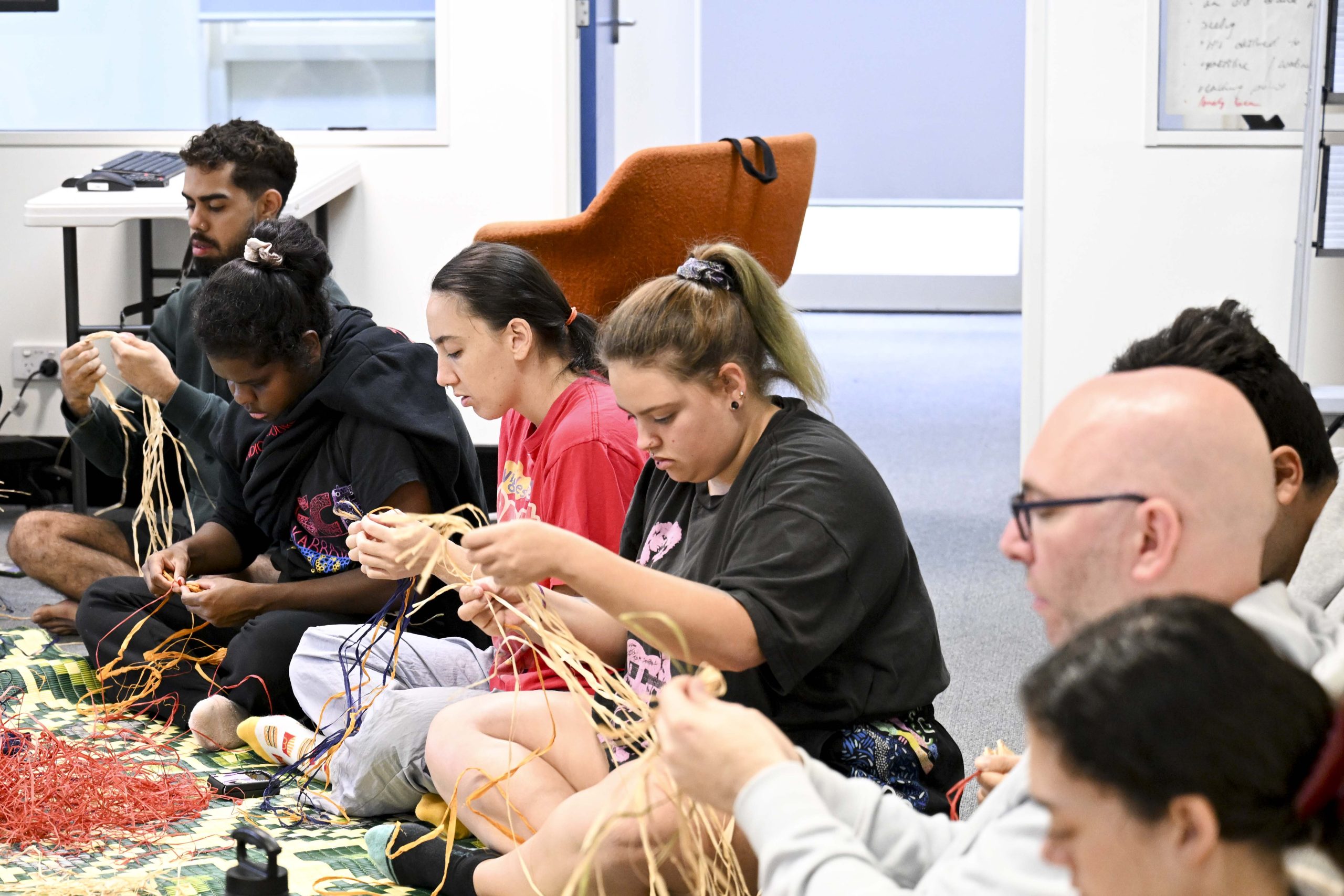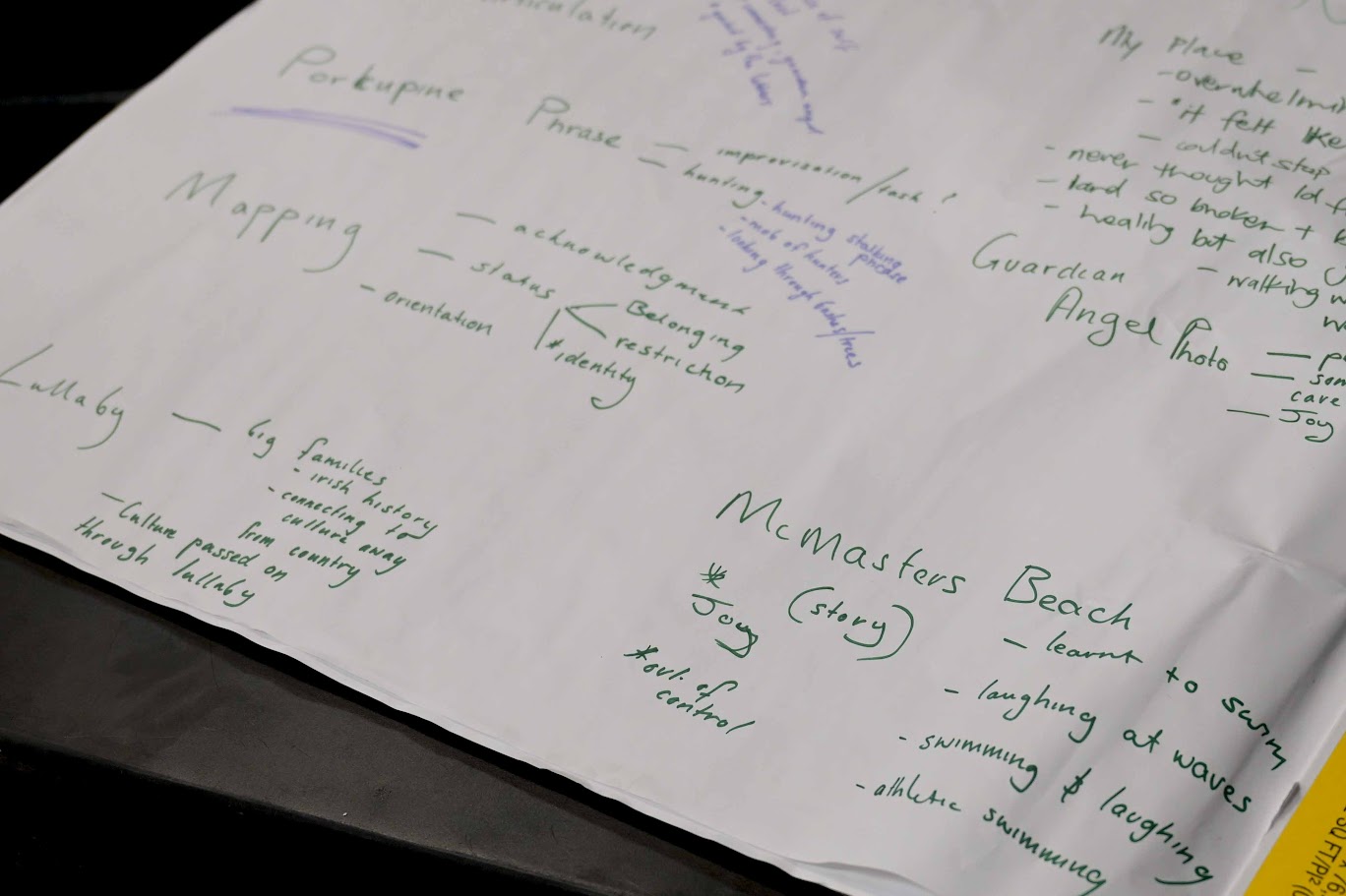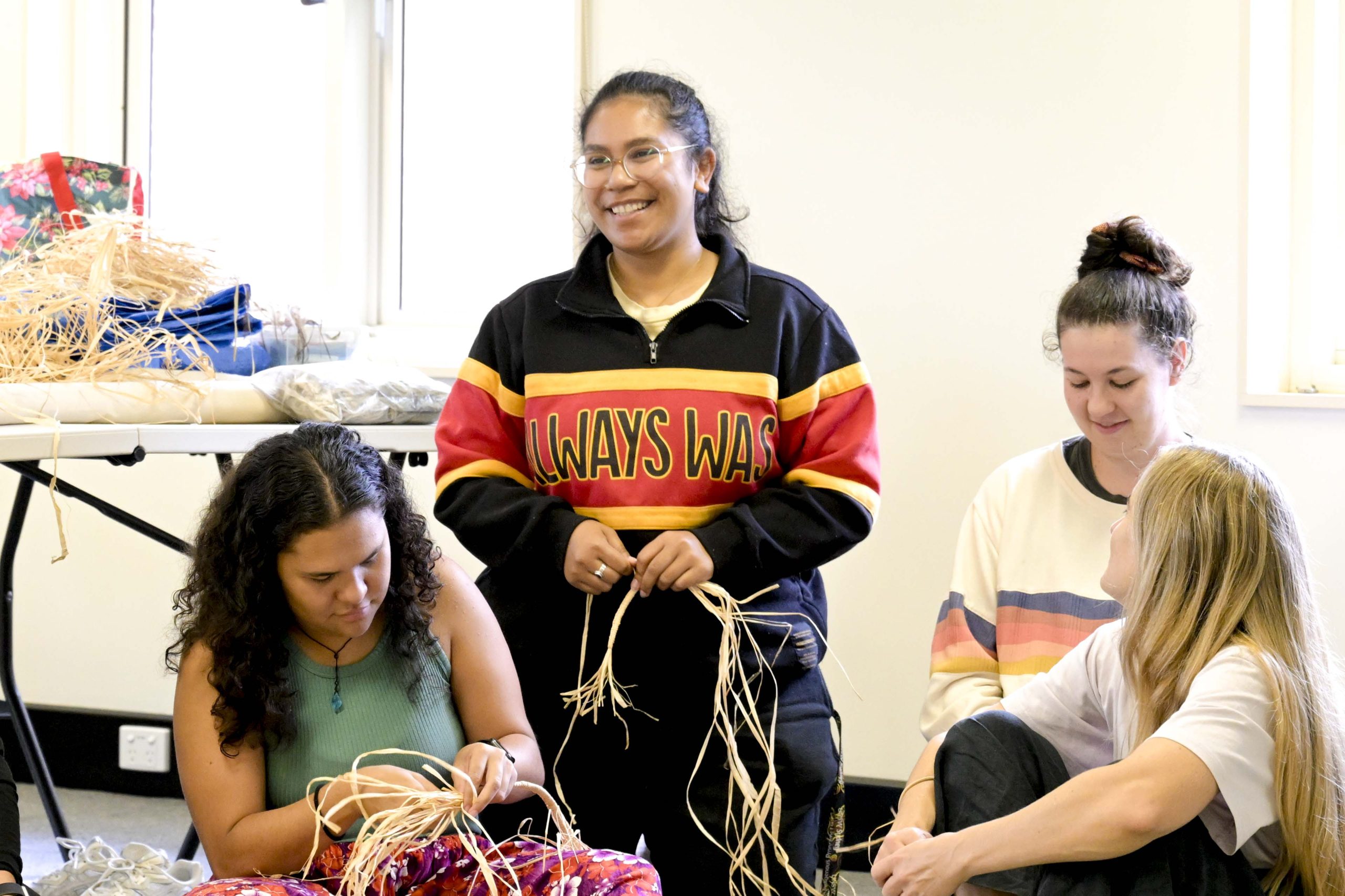A week-long intensive collaboration unfolded at NAISDA’s campus in March, bringing together Design and Directing students from the National Institute of Dramatic Art (NIDA) and Developing and Practising Artists from NAISDA.
Wakka Wakka and Kombumerri dancer and choreographer Katina Olsen facilitated the collaboration. She led students in cultural and creative learning and partnership focusing on cross-cultural storytelling and multidisciplinary approaches to performance.
Students participated in workshops, learning on Country, weaving and yarning with leading First Nations artists and contributors, including Dr Nerida Blair, Stuart McMinn, Kevin ‘Gavi’ Duncan, Jacob Nash, Berthalia Selina Reuben and Ryan Whitworth.
Ryan Whitworth, a proud Wiradjuri man and award-winning director, was invited as a guest artist for this year’s collaboration. Reflecting on his past involvement from his time as a NIDA student, Ryan shared the transformative impact the collaboration had on reconnecting him with his culture.
“I was a participant in the program a couple of years ago when I was a student at NIDA, and for me, it was quite a life-changing experience because when I came here [to NAISDA], I learnt things about my own culture that have been lost.”
“The collaboration is so important because I had that experience, and now I’ve come back to it as a guest artist. I left here as a student with contacts and a network, particularly in the First Nations community. This led me to be a First Nations creative producer. I wouldn’t have worked on The Visitors or the Yellamundie Festival otherwise – this collaboration program created that for me.”

NAISDA’s Performance and Production Unit Manager, Angie Diaz, has been involved in the collaboration since the beginning and has played a major role in its development throughout its time.
Angie stressed the importance of the program in creating inclusive and culturally safe spaces for artists from diverse cultural backgrounds and the need to embrace Cultural Knowings when looking at performance practices.
“It is a space where you can uphold cultural continuity, by embedding Indigenous Knowings into practice and take the time to listen to [First Nations] artists.”
“It’s shining a light on how we need to be sustainable and inclusive, particularly of other artists of other cultural backgrounds and Country. We all live on Country, walk on Country, breathe our Country. It feeds us, it nurtures us, it is our home.”
“If we tap into that, then we actually find a place where we all can create from.”
Ryan also added, “The program is important because for NAISDA students, it helps establish a strong network of artists and contacts which paves the way for future opportunities to create sustainable livelihoods and careers. For NIDA students, it gives a brief glimpse – a privilege really- into understanding Cultural Knowings and Indigenous Knowings. It makes them better practitioners and better advocates for First Nations arts.”
Both organisations are members of the ARTS8 – a national collective of Australia’s eight leading performing arts training organisations. Ryan and Angie explained the broader significance of the collaboration within this context.
“This collaboration sends an important message to our broader arts industry. It is so important for NIDA to be open and commit to that learning process with First Nations peoples, to strengthen and enrich our work in a liminal space in between,” said Ryan.
Angie added, “The collaboration is a project that I’ve worked on for a number of years and have developed over the course of that time. As Arts8 organisations, this platform of collaboration fosters the ongoing development of the arts in Australia and future artistic creation and expression.”

When asked about their standout moments from the week and what they hope to see come out of the collaboration, Angie and Ryan shared their own perspectives.
“I think a standout moment is seeing the potential of what future creative work can look like between First Nations and non-First Nations people. For me that was a huge highlight because it sets a tone and a message for the arts industry that if we can do this here, then we can do this everywhere,” Ryan stated.
“A standout for me was going on Country with Uncle Stu McMinn. We also spent a lot of time weaving, which allowed us to engage in an ancient Indigenous practice. The weaving also made us open up and talk; we make, and we talk, and we listen. It was definitely a highlight to see how that completely changed how people interacted. Students were open to share without being so concerned about the outcomes ,” added Angie.
“We also found that what was really important was the ability to create those safe spaces in which you can have culturally safe practice or start to develop it.”
Angie concluded, “I want this collaboration, this type of practice, to be happening everywhere and not just for artists, it’s so much bigger than that.”

To find out more about NAISDA’s curriculum, training programs and outcomes, click here.